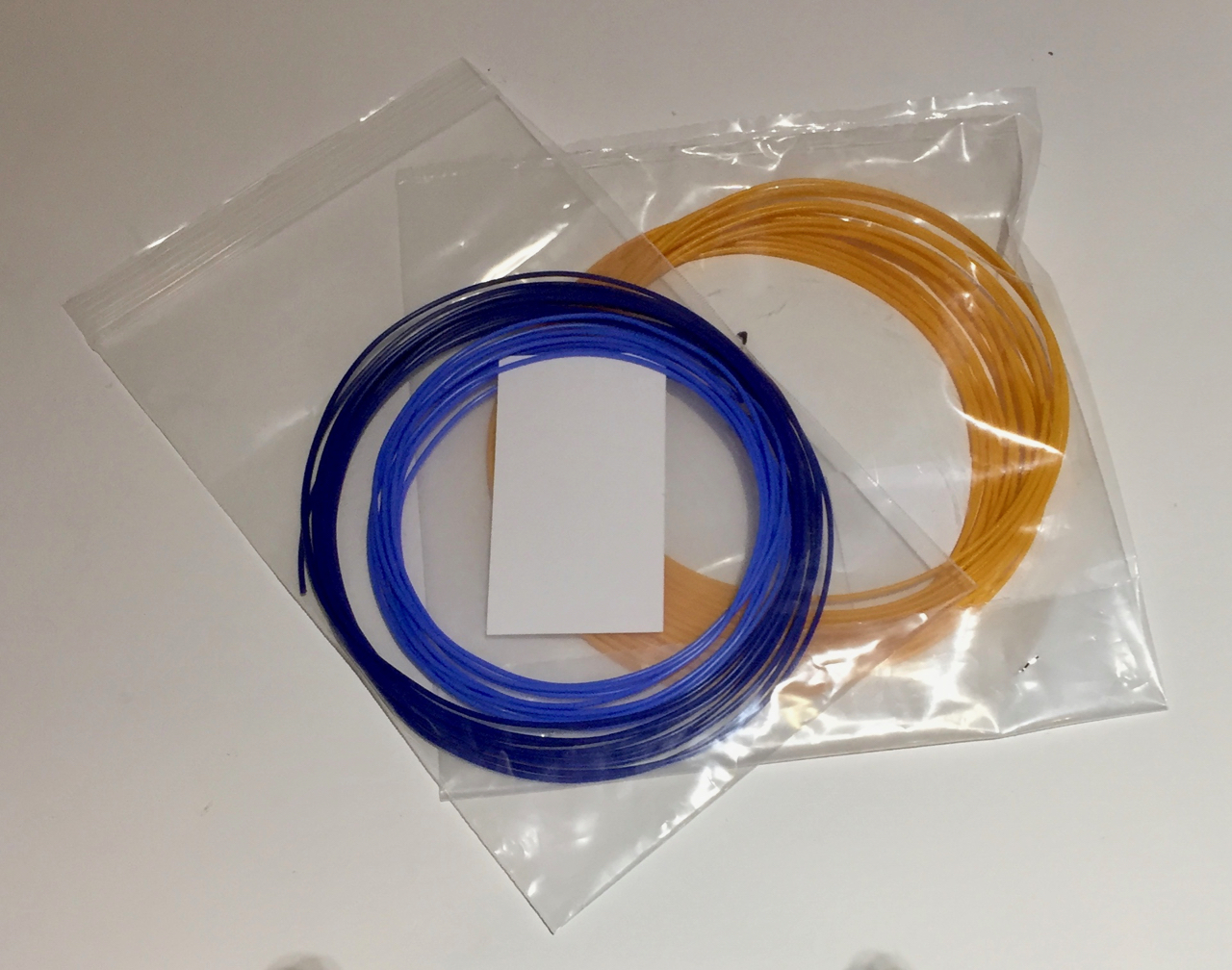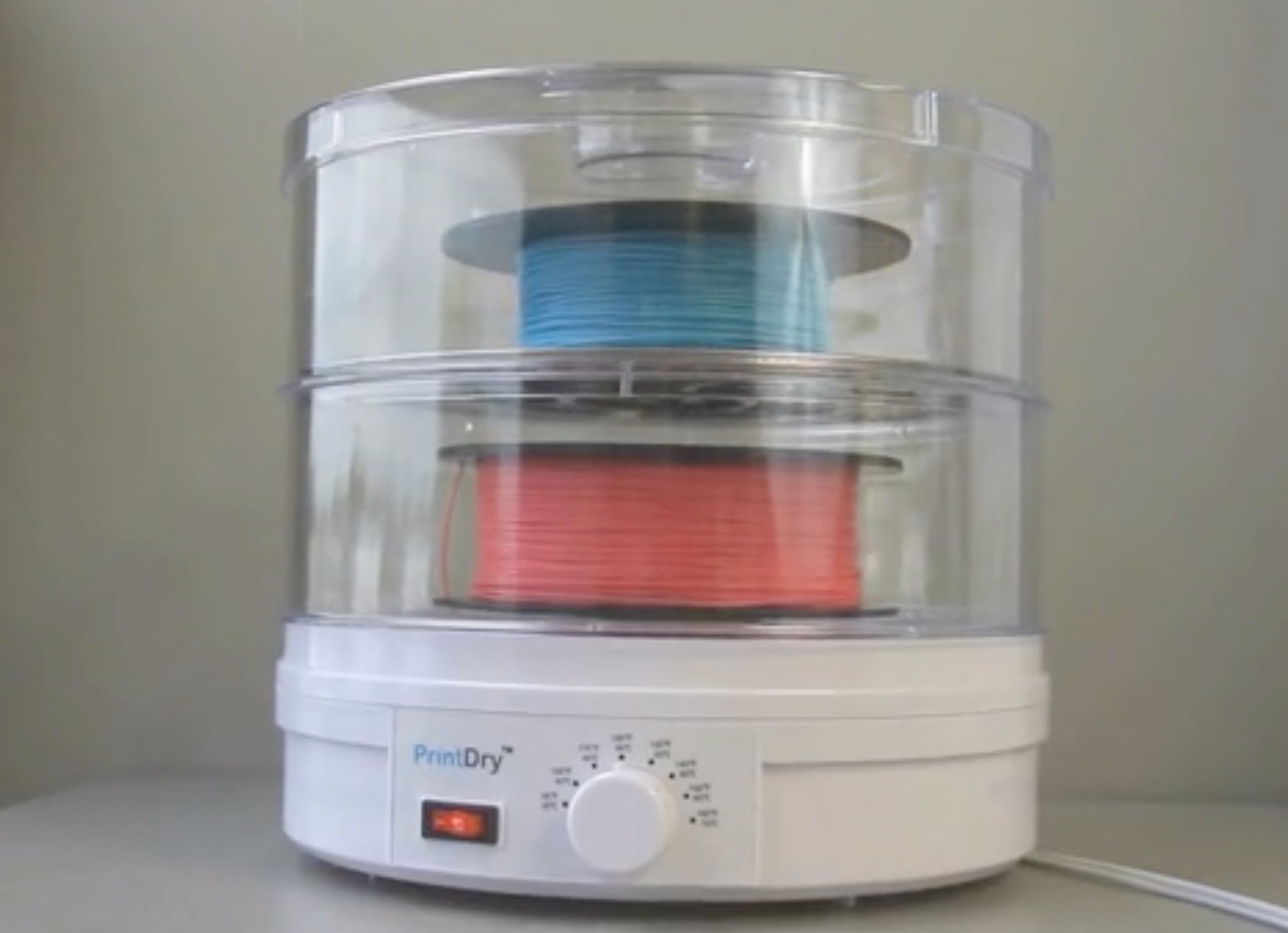
In a world with increasingly powerful desktop 3D printers, your filament probably deserves a lot more attention.
Consider this: the print quality achievable by today’s desktop 3D printers vastly exceeds that of early machines from five years ago. That print quality is partly measured by the consistency and smoothness of the printed parts.
But today’s machines increasingly are able to print – and some at higher speeds – ever finer layers, layers that define the smoothness and quality.
However, if you have lousy filament you may not be achieving the desired quality results.
There are several different scenarios for “lousy” filament, many originating at the filament manufacturer. These could include poor diameter consistency, variable coloration, contamination or other problems generated during filament fabrication.
But there’s one filament issue that occurs not in the filament factory, but one in your own workshop: humidity.
Some variations of plastic simply attract moisture. Once captured by the filament, you may see several effects, including swollen diameter that might jam, boiling water bubbles during extrusion causing gaps, inability to properly stick to the print surface, stringies or brittle filament that snaps before it reaches the hot end.
All of these are not pretty. They’re frustrating.
And, it turns out, partially preventable.
How do you prevent, or at least reduce the occurrence of such problems? It’s easy: just maintain your filament in proper environmental conditions that avoid absorption of moisture. Specifically, that means:
- Storing filament spools individually in sealed bags with a moisture absorbent agent. Get yourself a set of sealable plastic bags, such as those shown at top
- Storing the filament spools in a sealed cabinet or container with appropriate moisture controls
- Removing filament spools from 3D printers if they aren’t going to be used for a while (like a day or two)
There’s also the possibility of baking your filament to take out the moisture. This is in fact what filament manufacturers do: they literally bake spools at low temperatures for long periods to gradually pull out as much moisture as possible.
Baking is somewhat risky, however, particularly when doing this to plastics such as PLA that have a relatively low melt point. If you’re too anxious and set the temp too high, you may destroy your filament rather than restoring it.
You really have to keep the bake temperature well below the plastic’s glass temperature, where it begins to deform. Usually, that means something like 50C or so. And that low temperature means longer bake times.
It’s tricky to do this with a conventional home oven, as you may not be able to set or maintain the temperature to appropriate levels. However, there are a number of industrial or scientific ovens that can do the job.
One other option to consider is the “PrintDry” system now on Kickstarter, which attempts to do this type of work for you.

Actually, it does more than bake the filament; it can also feed it to your 3D printer after baking and drying. The device is available for only CAD$75 (USD$57), so that’s actually a very good deal.
Even better, this is a fairly straightforward product, thus there is a strong likelihood the team behind it will succeed, at least technically. They’ve already surpassed their goal by a factor of three, so it appears they’re going ahead.
Via PrintDry and Kickstarter

